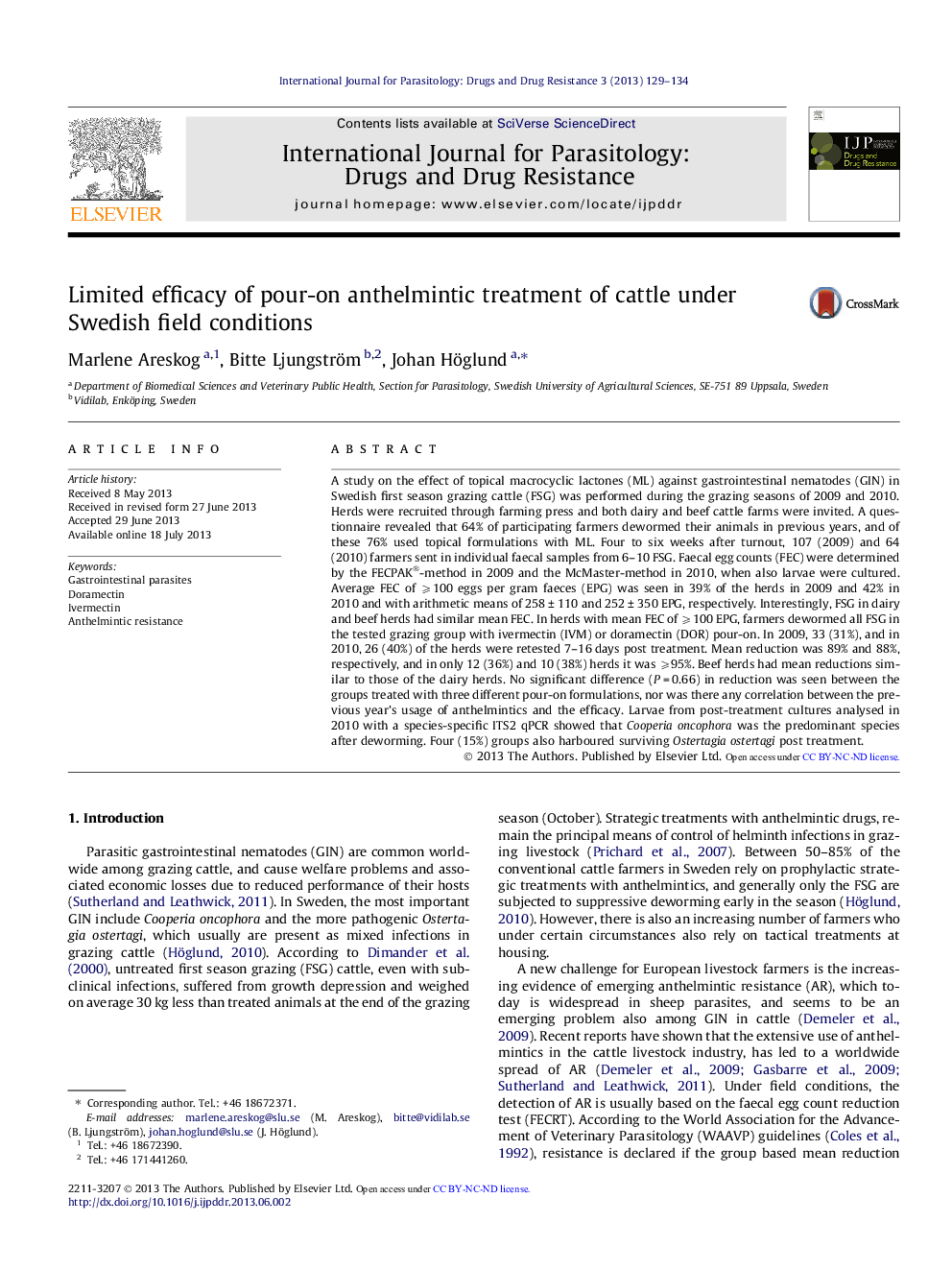| Article ID | Journal | Published Year | Pages | File Type |
|---|---|---|---|---|
| 2055149 | International Journal for Parasitology: Drugs and Drug Resistance | 2013 | 6 Pages |
•The use of topical formulations of macrocyclic lactones has increased in Sweden.•Anthelmintic efficacy of topical ML under Swedish field conditions is insufficient.•Cooperia oncophora was the predominant species surviving deworming.•Herds that require treatment can be identified by faecal samples, 4–6 weeks after turnout.•Swedish beef herds should be considered for GIN control to a greater extent than is done today.
A study on the effect of topical macrocyclic lactones (ML) against gastrointestinal nematodes (GIN) in Swedish first season grazing cattle (FSG) was performed during the grazing seasons of 2009 and 2010. Herds were recruited through farming press and both dairy and beef cattle farms were invited. A questionnaire revealed that 64% of participating farmers dewormed their animals in previous years, and of these 76% used topical formulations with ML. Four to six weeks after turnout, 107 (2009) and 64 (2010) farmers sent in individual faecal samples from 6–10 FSG. Faecal egg counts (FEC) were determined by the FECPAK®-method in 2009 and the McMaster-method in 2010, when also larvae were cultured. Average FEC of ⩾100 eggs per gram faeces (EPG) was seen in 39% of the herds in 2009 and 42% in 2010 and with arithmetic means of 258 ± 110 and 252 ± 350 EPG, respectively. Interestingly, FSG in dairy and beef herds had similar mean FEC. In herds with mean FEC of ⩾100 EPG, farmers dewormed all FSG in the tested grazing group with ivermectin (IVM) or doramectin (DOR) pour-on. In 2009, 33 (31%), and in 2010, 26 (40%) of the herds were retested 7–16 days post treatment. Mean reduction was 89% and 88%, respectively, and in only 12 (36%) and 10 (38%) herds it was ⩾95%. Beef herds had mean reductions similar to those of the dairy herds. No significant difference (P = 0.66) in reduction was seen between the groups treated with three different pour-on formulations, nor was there any correlation between the previous year’s usage of anthelmintics and the efficacy. Larvae from post-treatment cultures analysed in 2010 with a species-specific ITS2 qPCR showed that Cooperia oncophora was the predominant species after deworming. Four (15%) groups also harboured surviving Ostertagia ostertagi post treatment.
Graphical abstractFigure optionsDownload full-size imageDownload as PowerPoint slide
